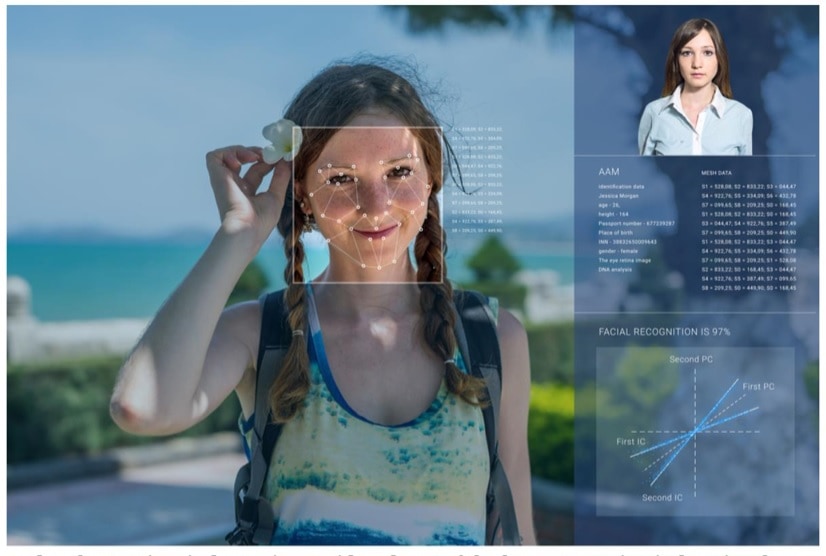Today the tourism industry is considered one of the largest growing industries that are contributing to the global economy. A recent study shows that the total contribution of the travel industry is about $8.27 trillion with $1.43 trillion global tourism revenue. A large number of tourists are traveling worldwide mostly in China, the United States, and Germany. It is expected that the international tourist arrival would exceed 1.8 billion by the end of 2030.
With this high volume of tourists traveling around the world, it gets hard to provide comfort and services at the same time. During immigration, it takes a lot of time in boarding, checking and verification processes. To combat this, biometric verification is innovating the travel industry by speeding up the onboarding process through automated identity verification.
Not only this, the travel industry has started biometric verification online through their online portals. This verification is done during the bookings of tickets. Online verification helps in streamlining the traveling experience and provide customers with fast services. Also, to introduce comfort and security in the travel industry is the purpose of the use of biometric verification.
Streamline and Secure Traveling
By the end of 2030, it is expected that international arrivals will increase by 50%. The hassles, therefore, would increase in the airports while check-ins and customer verification. Also, with a massive crowd to verify, it would be challenging for both the staff and passengers. This seems that positive customer experience will not be made possible.
Biometric verification is the solution to boost up the passenger’s verification process. Online booking and identity verification can help the travel industry in streamlining the process. The innovations that are taking place in the travel industry are:
Distributed Ledger: Instead of one central authority, trust is enabled in a decentralized way such that a large network is able to manage the crowd of passengers in an efficient way.
Cryptography: In a decentralized system, it is necessary to secure the network and information transfer in a transit. For this, it is important to encrypt the gateways through which information is supposed to transfer so that the information is not altered in any way.
Biometrics: Identity verification based on unique biological patterns, biometric verification is done to ensure the guaranteed verification of a passenger.
Mobile Applications: Passengers can use their digital identity and save it in mobile devices to use them when needed. Also, online mobile applications can be used for identification and verification purposes.
These innovations are contributing to the security of airports and other traveling places. Passengers are verified using the Anti-Money Laundering (AML) background checks and Politically Exposed People (PEP). This is necessary in order to ban the travel of people who are shortlisted as criminals. The travel industry is the main target for terrorists and money laundering activities. To avoid such malevolent activities, it is important to verify the customers using their digital identity. This will not only mitigate the risks of illegal activities but also contribute to perform tasks of hours in minutes and seconds.
Methods of Biometric Verification
Biometric verification is considered only the game of fingerprint scanning, but it is not actually the case. All the unique biological traits of a human body can be used for biometric verification. These traits include fingerprint scanning, iris scanning, retina scanning, face recognition, hand geometry, etc. The travel industry is taking advantage of this technology in order to introduce betterment in the onboarding process.
Face Recognition and Travel Industry
In online pre-bookings of tickets, biometric verification is revolutionizing in the landscape of the travel industry. Passengers can now book their tickets online, verify their passports through online document verification. Identity is verified using a selfie, it is matched with the picture on the ID card. If both matches, a person is verified and a further request is processed.
All this is possible due to the facial recognition technology which captures the facial patterns of a person, maps these geometrical patterns and verify in a couple of seconds. The travel industry is using this technology on their online system by integrating the relevant API and verify the onboarding customers.
Facial verification is the category of biometric verification which is serving the travel industry and ensures security as well as quick verification of customers. Both the staff and customers and getting benefit from new innovations. As now staff does not need to manually check each customer and customers do not need to wait for hours in the queues for their turn.
The travel industry is innovating itself by adopting new technological ways to advance their customer onboarding process. This would streamline the travel process for passengers. The travel industry would be taking a positive customer experience and would turn itself in the era of advancements worldwide.
